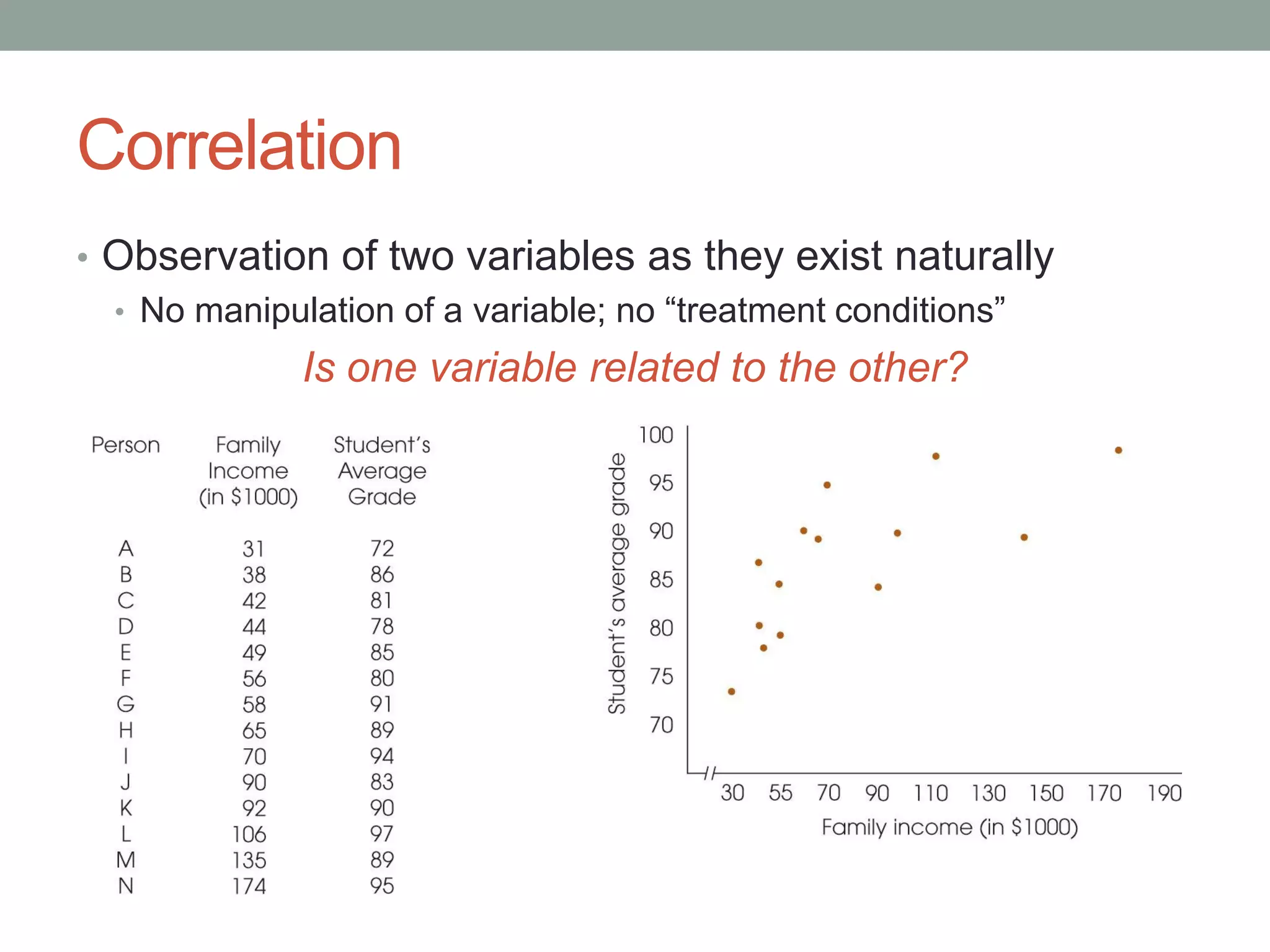This document provides an overview of correlation and the Pearson correlation coefficient. It discusses how the Pearson r describes the direction, form, and strength of the linear relationship between two variables. It explains how to calculate r using the sum of products formula and interpret the results. The text also covers hypothesis testing with r and reporting correlations. Alternatives to the Pearson r are mentioned but not covered in detail.




























